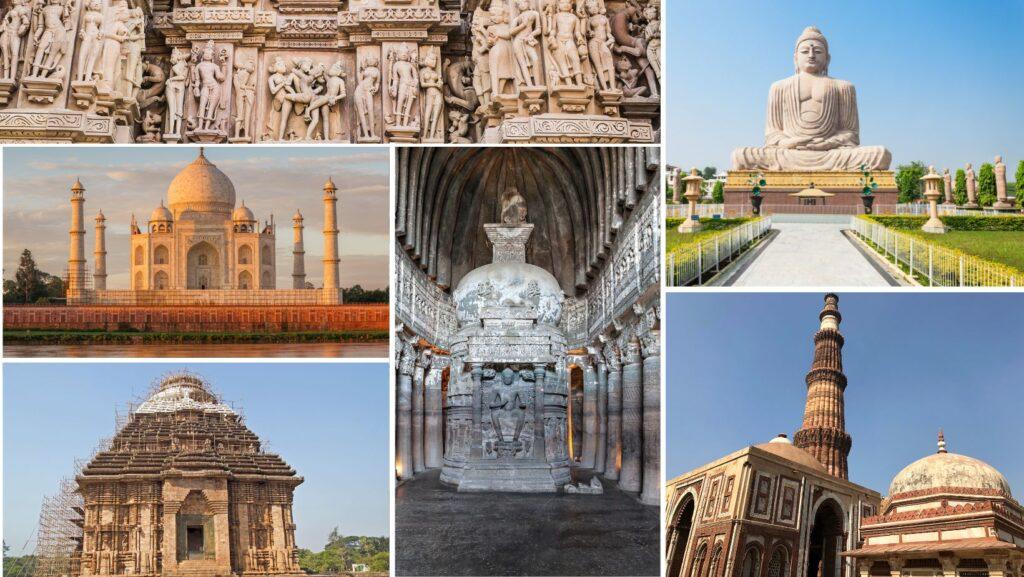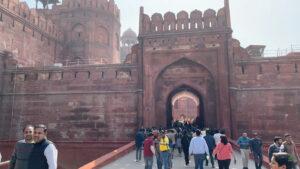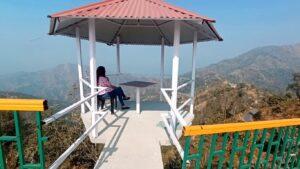India is a country that has a rich and diverse history and culture that spans thousands of years. India has been home to various civilizations, empires, religions, and cultures that have left their mark on the land and the people.
India has also been influenced by foreign invaders, traders, and colonizers who brought their own ideas, values, and traditions to the country.
India is a place where you can find ancient monuments, temples, forts, palaces, caves, and sculptures that showcase the artistic and architectural achievements of different eras and regions. India is also a place where you can experience vibrant and colorful festivals, rituals, cuisines, music, dance, and literature that reflect the diversity and creativity of the Indian people.
If you are looking for places to visit in India that will take your breath away and make you appreciate the beauty and brilliance of human creativity, then you have come to the right place. We will introduce you to 10 amazing sites in India that are not only spectacular to look at but also have a deep and fascinating history and significance behind them.
These sites are also recognized as UNESCO World Heritage Sites, which means that they are of outstanding universal value and deserve protection and preservation for future generations.
1. Taj Mahal: The Symbol of Love and Beauty
The Taj Mahal is one of the most famous and beautiful monuments in the world. It is located in Agra, India, and it was built by the Mughal emperor Shah Jahan in the 17th century as a tribute to his beloved wife Mumtaz Mahal, who died giving birth to their 14th child. The Taj Mahal is a masterpiece of architecture, art, and engineering, and it is considered a symbol of love and beauty.
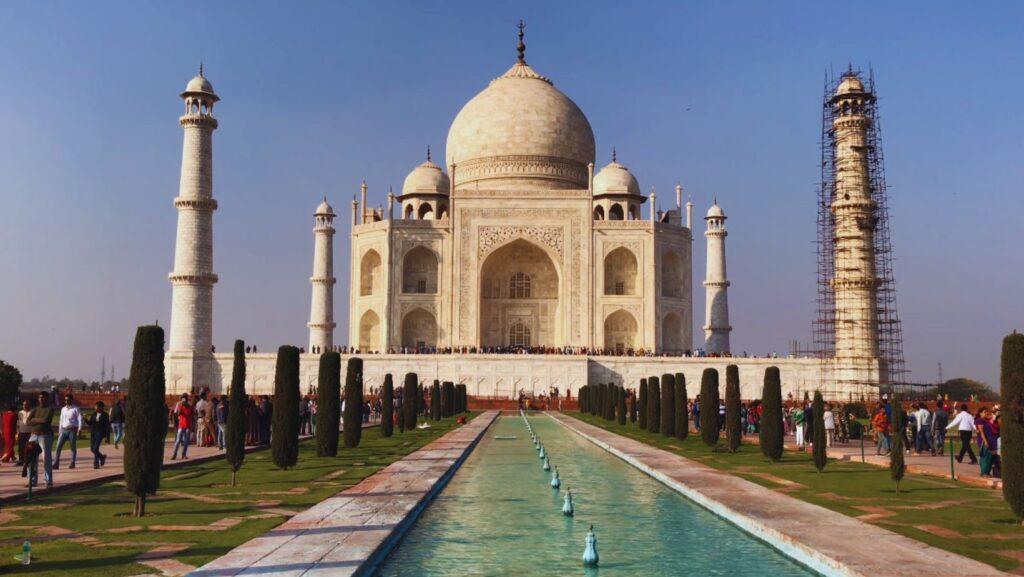
The Taj Mahal is also famous for its changing colors throughout the day and night. Depending on the time and the weather, the Taj Mahal can appear pink, white, golden, or blue. The reflection of the monument in the Yamuna River and the surrounding gardens adds to its beauty and charm. Many people visit the Taj Mahal at sunrise or sunset to witness its magical hues.
The Taj Mahal is a must-see attraction for anyone who visits India. It is a place where you can admire the beauty of human creativity and feel the emotion of eternal love.
2. Brihadisvara Temple: The Masterpiece of Chola Architecture
Brihadisvara Temple is another magnificent example of Indian architecture, dedicated to Lord Shiva. It is located in Thanjavur, Tamil Nadu, on the south bank of the Cauvery River. It was built by Rajaraja Chola I in the 11th century CE and is part of the UNESCO World Heritage Site known as the Great Living Chola Temples.
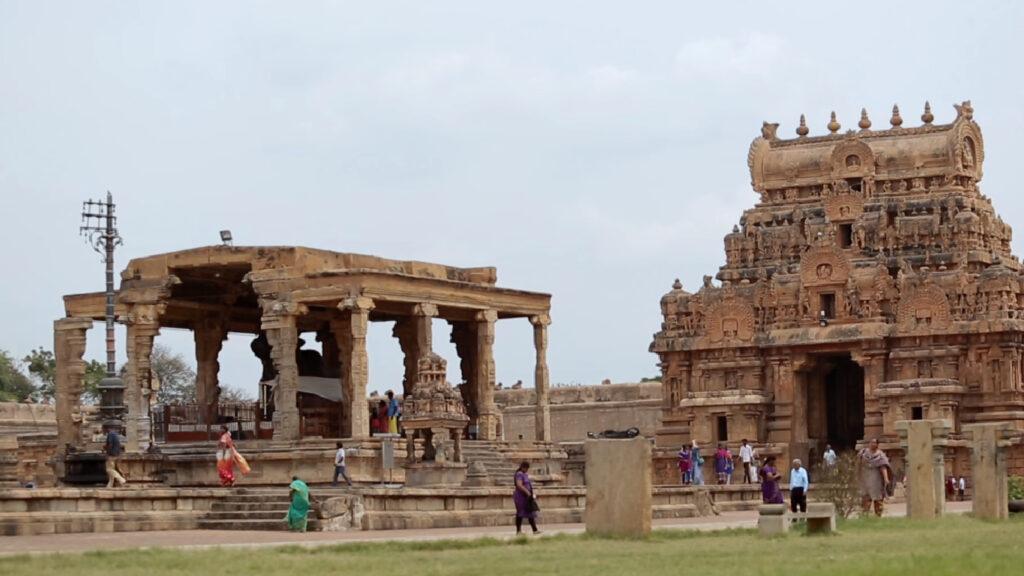
The temple is famous for its grandeur, beauty, and symbolism. It has a towering vimana (pyramidal roof) that is 66 meters high and one of the tallest in South India. The temple is made of granite, which is remarkable because there is no source of granite near Thanjavur.
The temple has a huge Nandi (bull) statue, carved from a single rock, that is 13 feet high and 16 feet wide. The temple also has exquisite sculptures, paintings, and inscriptions that depict various aspects of Shaivism, as well as Vaishnavism and Shaktism.
The temple is also known for its changing colors throughout the day and night, depending on the sunlight and moonlight. It reflects in the river and the gardens, creating a mesmerizing sight.
The temple is open from 6:00 am to 9:00 pm every day. There is no entry fee for visitors, but donations are accepted.
Brihadisvara Temple is a must-see attraction for anyone who visits Tamil Nadu.
3. Agra Fort: The Red Sandstone Fortress of the Mughals
Agra Fort is another impressive monument built by the Mughals, located in Agra, Uttar Pradesh, near the Taj Mahal. It was originally a brick fort built by the Rajputs in the 11th century but was later captured and renovated by the Mughals in the 16th century.
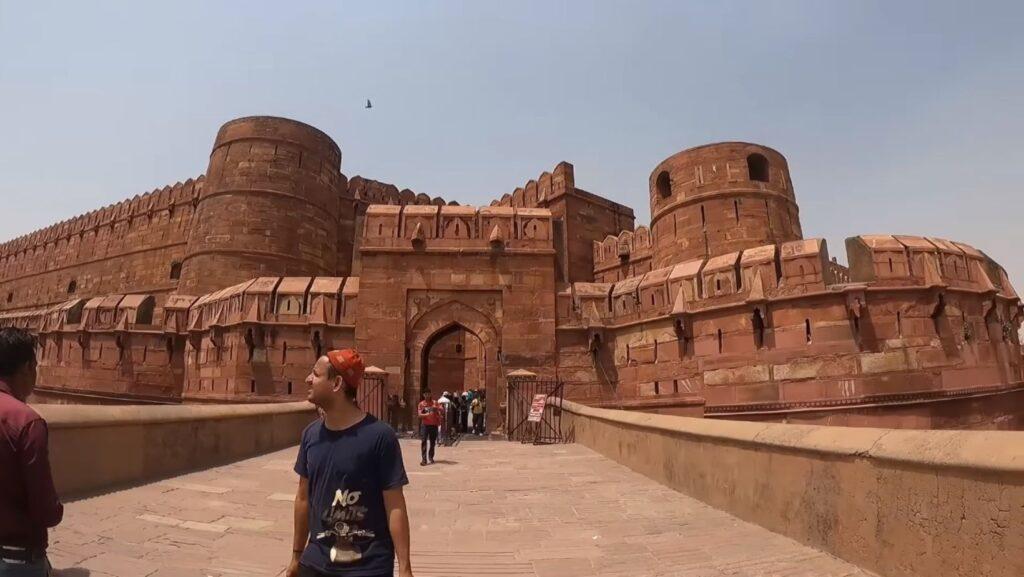
The fort is made of red sandstone, which gives it a distinctive appearance and color. The fort covers an area of 94 acres and has four gates, two of which are open to the public: the Delhi Gate and the Lahore Gate.
Inside the fort, you’ll find beautiful palaces, audience halls, and the stunning Moti Masjid (Pearl Mosque). From its ramparts, you can catch a glimpse of the Taj Mahal in the distance, adding to the fort’s allure.
4. Khajuraho Temples: The Erotic Sculptures of Ancient India
The Khajuraho Temples are a group of Hindu and Jain temples in Madhya Pradesh, India, that were built between the 10th and 11th centuries by the Chandela dynasty.
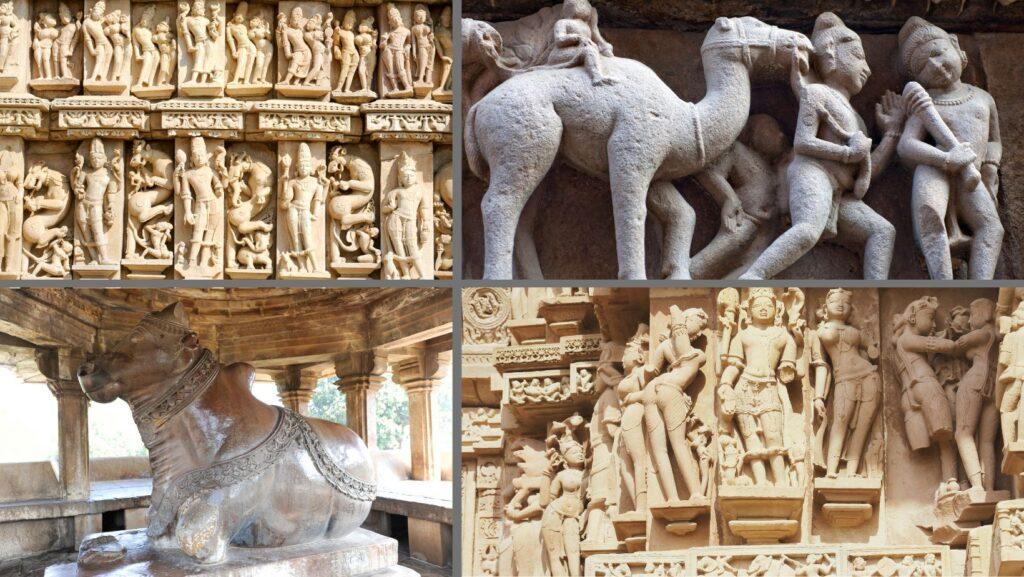
There are over 20 temples in the Khajuraho complex, but only a few are still in good condition. The most famous temples include the Kandariya Mahadeva Temple, the Lakshmana Temple, and the Vishvanatha Temple.
Facts About the Khajuraho Temples:
- The temples are built of sandstone, which has been carved into intricate and beautiful designs.
- The sculptures depict a wide range of subjects, including animals, plants, and deities.
- The erotic sculptures are found on both the exterior and interior of the temples.
- The Khajuraho Temples were a UNESCO World Heritage Site in 1986.
The Khajuraho Temples are a popular tourist destination, and they attract visitors from all over the world. If you are visiting Khajuraho, be sure to dress respectfully and be mindful of the religious significance of the temples.
5. Hampi: The Ruins of a Glorious Empire
Hampi is a UNESCO World Heritage Site in Karnataka, India, that was once the capital of the Vijayanagara Empire, one of the largest and most powerful Hindu kingdoms in history. Hampi was a prosperous and magnificent city, with temples, palaces, markets, and monuments that showcased the artistic and architectural achievements of the Vijayanagara rulers and craftsmen.
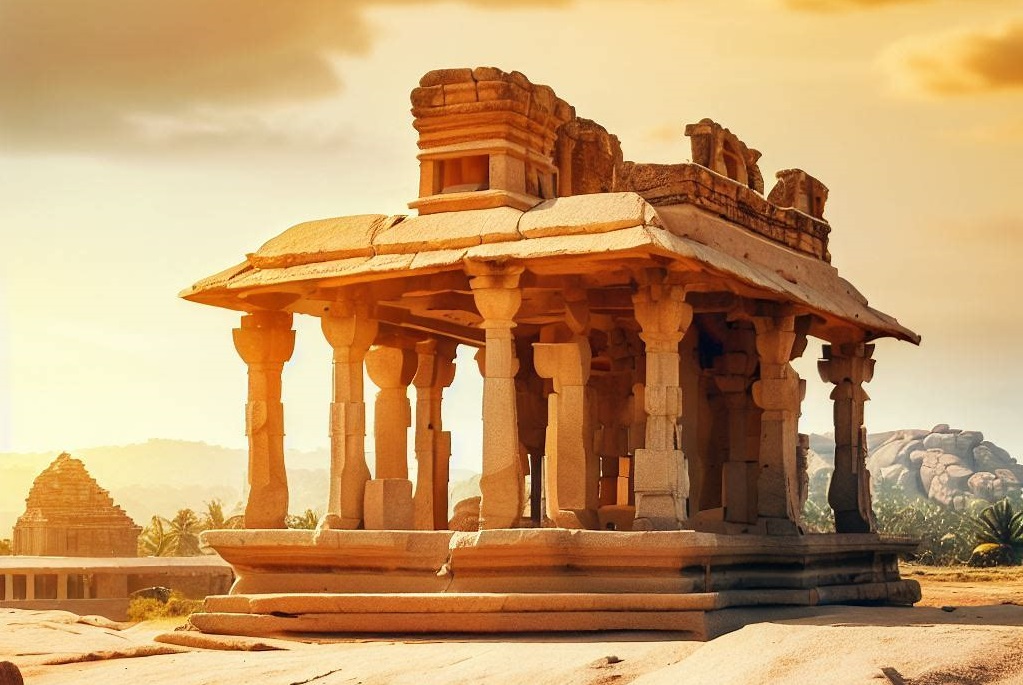
Hampi is a popular tourist destination, where visitors can explore the remains of the once-great city and marvel at its beauty and splendor. Hampi covers an area of 4,100 hectares (16 sq mi), and has more than 1,600 monuments that include forts, temples, shrines, halls, mandapas, water structures, and more.
The most notable attractions in Hampi are:
- Virupaksha Temple: This is the oldest and most sacred temple in Hampi, dedicated to Lord Shiva. It is also the only temple that is still active and has regular worship services.
- Vittala Temple: This is one of the most famous and impressive temples in Hampi, known for its exquisite architecture and craftsmanship. The temple is dedicated to Lord Vishnu in his form as Vittala, a local deity associated with music and dance. The temple has a stone chariot (ratha) that is carved from a single block of granite and has four wheels that can rotate. The temple also has a musical hall (sabha mandapa) that has 56 musical pillars (sa-re-ga-ma pillars) that produce different musical notes when tapped.
- Lotus Mahal: This is a palace complex that was used by the royal women of the Vijayanagara Empire. It is also known as the Zenana Enclosure or the Women’s Quarters. The palace has a distinctive lotus-shaped dome that gives it its name. The palace also has arched windows, balconies, and pyramidal towers that reflect a fusion of Hindu and Islamic styles.
Hampi is not only a place of history, but also a place of culture and spirituality. It represents the legacy of the Vijayanagara Empire, which was one of the greatest civilizations in Indian history.
6. Ajanta Caves: The Buddhist Rock-Cut Art Gallery
The Ajanta Caves are a series of 29 Buddhist rock-cut cave temples in Ajanta, Maharashtra, India. The Ajanta Caves are famous for their paintings and sculptures that depict various aspects of Buddhism, such as the life of the Buddha, the Jataka tales, and the Bodhisattvas.
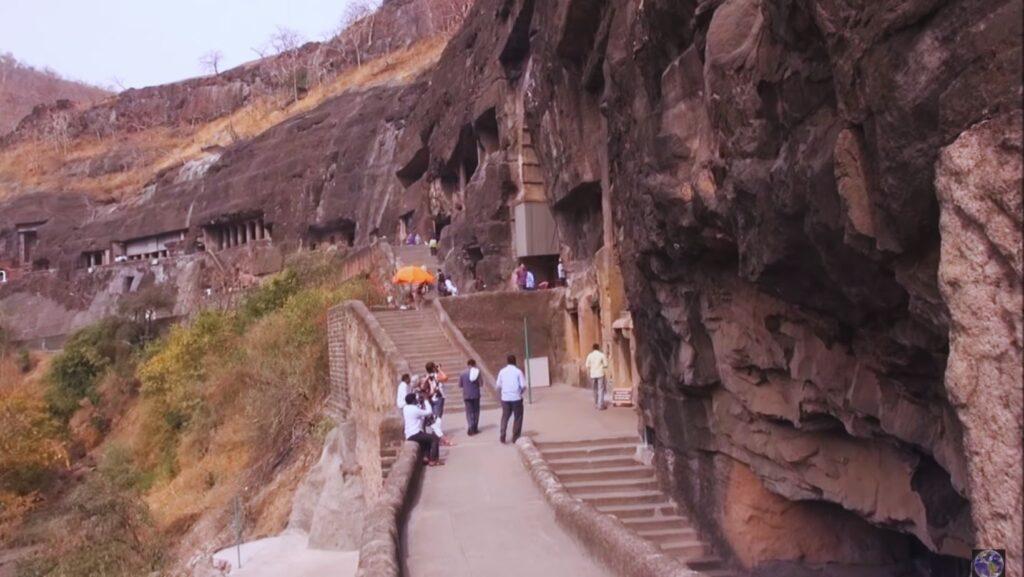
The Ajanta Caves are divided into two phases: the Hinayana phase and the Mahayana phase. The Hinayana phase consists of six caves (caves 8, 9, 10, 12, 13 and 15A) that were excavated between the 2nd and 1st centuries BCE. These caves are simple and austere, and they have no images of the Buddha. Instead, they have symbols like the stupa, the wheel, and the lotus to represent him.
The Mahayana phase consists of 23 caves (caves 1-7, 11, 14-29) that were excavated between the 5th and 6th centuries CE. These caves are more elaborate and ornate, and they have images of the Buddha in various forms and postures. They also have images of other Buddhist deities, such as Avalokiteshvara, Tara, Manjushri, and Vajrapani. The paintings in these caves are more vibrant and detailed, and they show stories from the Buddhist scriptures and legends.
7. Mahabodhi Temple: The Place Where Buddha Attained Enlightenment
The Mahabodhi Temple is a Buddhist temple in Bodh Gaya, Bihar, India, that marks the location where the Buddha attained enlightenment.
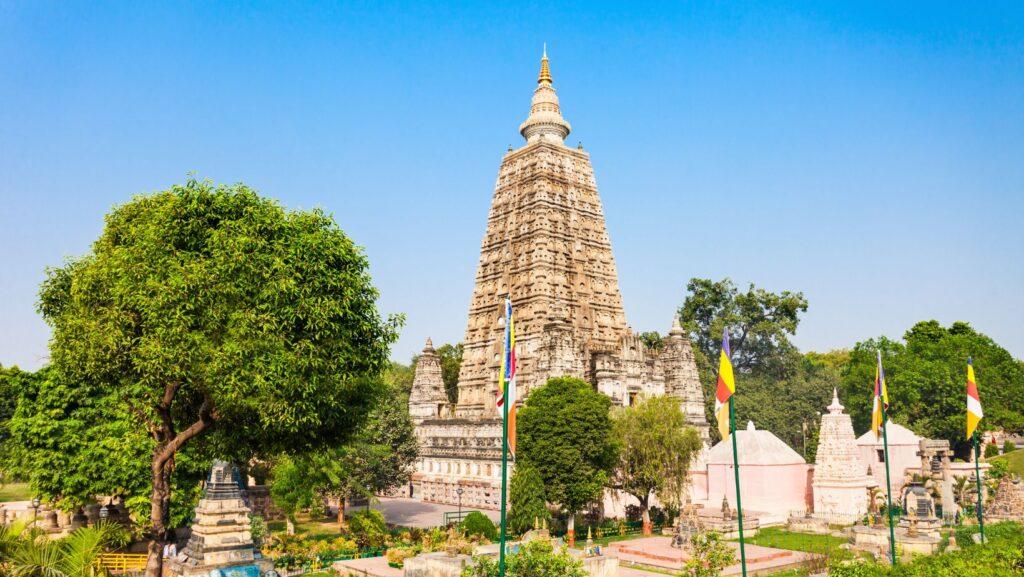
The temple was built by Emperor Ashoka in the 3rd century BCE, and the present temple dates from the 5th or 6th centuries CE. It is one of the earliest Buddhist temples built entirely in brick, and it has a 50-meter-high tower (shikhara) that is decorated with carvings and sculptures. The temple also has a stone platform (Vajrayana) that is believed to be the seat of the Buddha when he meditated under the Bodhi tree.
The temple complex also includes six other sacred sites where the Buddha spent seven weeks after his enlightenment, such as the Jewel Walk, where he walked back and forth in meditation, and the Lotus Pond, where he bathed.
The Mahabodhi Temple is not only a place of history, but also a place of culture and spirituality. It represents the culmination of the Buddha’s quest for truth and peace, and the source of his teachings that have inspired millions of people across the world. It also represents the diversity and harmony of Buddhism, which encompasses various traditions, schools, and sects. The Mahabodhi Temple is a place where you can admire the beauty of human creativity and feel the essence of eternal love.
8. Konark Sun Temple: The Sun God’s Chariot in Stone
The Konark Sun Temple is a stunning example of ancient Indian temple architecture and art, dedicated to the Hindu sun god Surya. It is located on the eastern coast of India, in the state of Odisha, about 35 km from the city of Puri.
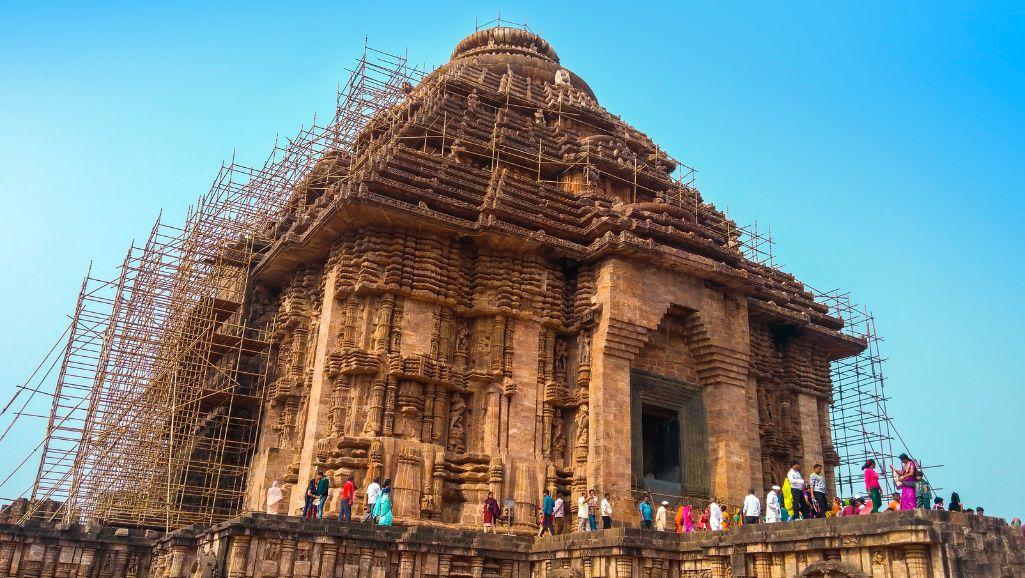
The Konark Sun Temple is not only a place of history, but also a place of culture and spirituality. It represents the glory and devotion of the Eastern Ganga dynasty, which ruled over Odisha for over three centuries. It also represents the worship and reverence of Surya, who is considered as the source of life and energy in Hinduism. The Konark Sun Temple is a place where you can admire the beauty of human creativity and feel the essence of eternal love.
9. Qutub Minar: The Tallest Brick Minaret in the World
Qutub Minar is the tallest brick minaret in the world, standing at 72.5 meters (238 feet) high. It is located in Delhi, India, and it is part of the Qutb complex, a UNESCO World Heritage Site. The minaret was built in the 13th century by the Delhi Sultanate, a Muslim dynasty that ruled over northern India.
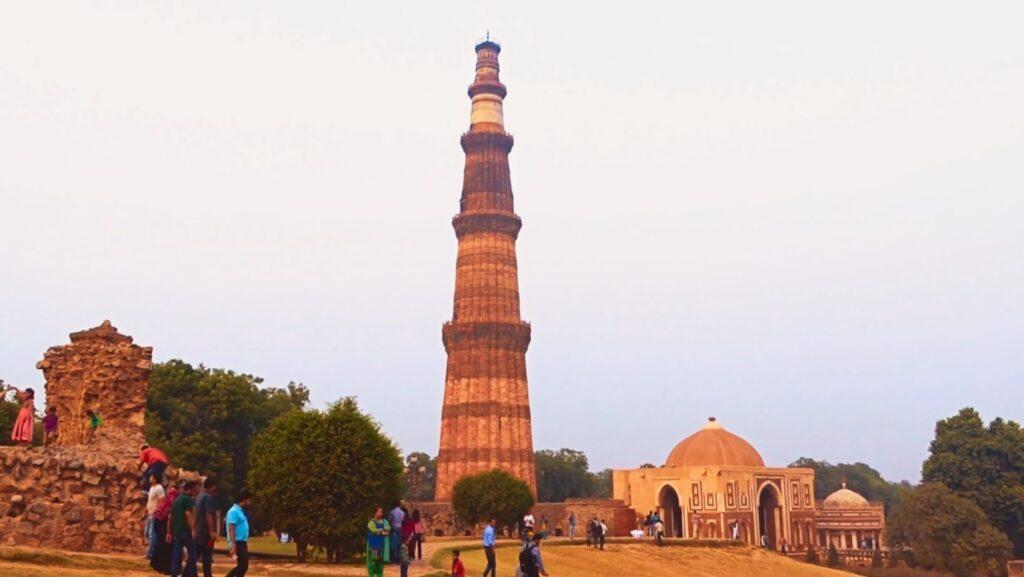
The Qutb complex also contains other monuments and buildings from the Delhi Sultanate era, such as the Quwwat-ul-Islam Mosque, the Alai Darwaza, the Iron Pillar, and the Tomb of Iltutmish. The complex showcases the fusion of Islamic and Hindu styles of architecture and art, as well as the cultural and religious diversity of India.
Jaipur, Rajasthan: The Pink City of India and Its Splendid Attractions
The entire city of Jaipur is a cultural marvel, known as the “Pink City” due to its distinctive pink-hued buildings. Key attractions include the Amber Fort, City Palace, Hawa Mahal, and the Jantar Mantar observatory.
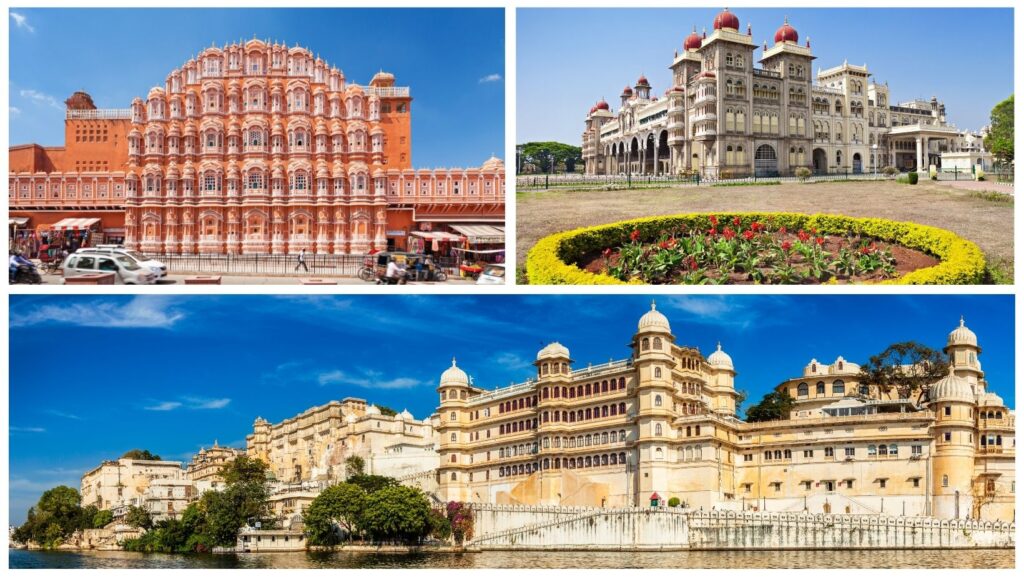
Which historical site in India is considered as the symbol of love and beauty?
The Taj Mahal is considered as the symbol of love and beauty, as it was built by Shah Jahan for his wife Mumtaz Mahal, who died in childbirth. The Taj Mahal is a white marble mausoleum with a symmetrical design and four minarets. It is located in Agra, Uttar Pradesh, and it is a UNESCO World Heritage Site.
Which historical site in India is known for its erotic sculptures of ancient India?
The Khajuraho Temples are known for their erotic sculptures of ancient India, as they depict various aspects of sexuality and sensuality in Hinduism, Buddhism, and Jainism. The Khajuraho Temples are a series of 29 Buddhist rock-cut cave temples in Khajuraho, Madhya Pradesh, and they are a UNESCO World Heritage Site.
Which historical site in India is designed as a colossal stone chariot that carries the sun god across the sky?
The Konark Sun Temple is designed as a colossal stone chariot that carries the sun god Surya across the sky. It is located on the eastern coast of India, in Odisha, and it is a UNESCO World Heritage Site. The temple has 24 wheels and seven horses, and it is decorated with carvings and sculptures of gods, goddesses, celestial beings, animals, plants, warriors, dancers, musicians, and erotic scenes.
These are just some of the places to visit in India that will leave you awestruck and inspired by the beauty and diversity of this incredible country. Also, book your tickets and tours online, and get the best deals and discounts. Don’t wait any longer, plan your trip to India today and experience the history and culture of this amazing land. Visit our website now and start your journey!
